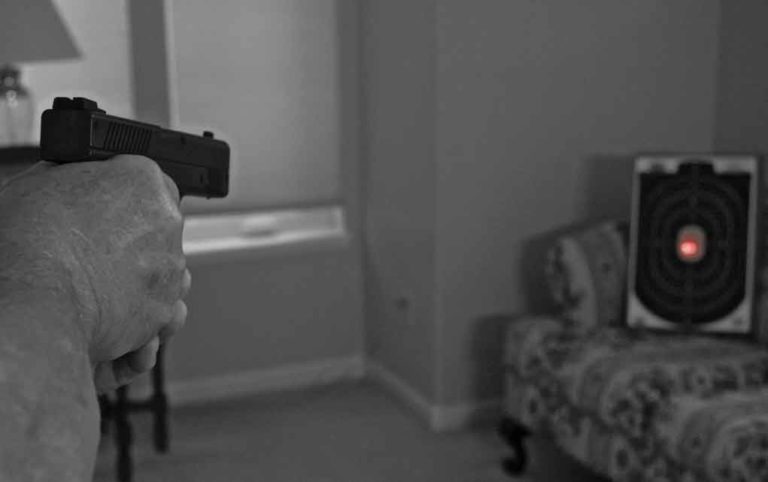
Practice doesn’t have to stop when you leave the range with the aid of laser training devices.
Why are laser training devices good options for non-live-fire training?
- Laser training devices allow shooters to stage drills that simulate specific situations.
- They're excellent for new shooters, teaching safety basics before welding a live firearm.
- There are many brands — LaserLyte, Laser Ammo and Next Level Training, etc.
- These include systems that utilize faux firearms or actual weapons systems.
- Paired with regular live-fire training, laser devices can have a big impact on shooters.
It doesn’t matter if it’s your life, your pride or a championship on the line. Nothing is more important than hitting your target when it matters most. That’s why the best shooters train, and they train often. They spend countless hours on the range shooting live ammo and going through all the motions they expect to use on the range or on the street.
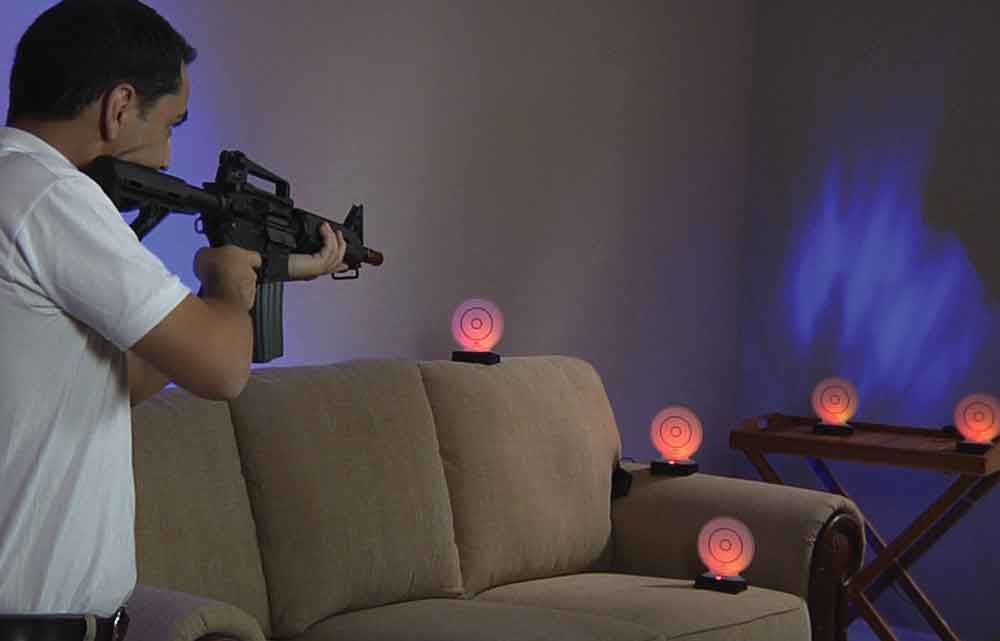
That’s because there is no better practice than live-fire drills that simulate specific situations. Sometimes, though, live-fire training just isn’t an option. Life has a way of interrupting time at the range, and for many of us, the cost of live ammo is enough to keep us from shooting as often as we should. It’s easy to burn through $100 or more in just a few hours.
“Many ranges do not allow you to practice drawing, either, so if you don’t have access to a range that does, your next best option is to use a laser training device,” says Laser Ammo spokesman Colin Gallagher, a retired police officer and former contestant on Top Shot. “Other than the initial cost of the equipment, there are no expenses associated with using a laser training device, either. You can shoot thousands of times, and it won’t cost you anything other than maybe some batteries.”
That’s why serious shooters don’t just rely on live-fire practice: They use laser training tools at every opportunity.
“It doesn’t replace live fire. You must practice with live ammo as often as possible, but a laser trainer lets you practice things like drawing, trigger control and target acquisition virtually anywhere. You can set up several reactive targets and practice moving just like in a competition or even a personal defense situation,” adds Gallagher. “They are also great safety training tools for beginning shooters and even advanced shooters. We have a training pistol that emits a warning sound any time the finger enters the trigger guard before the gun is raised. That can help reduce negligent discharges.”
How They Work
The mechanics of laser training devices are pretty simple, at least from a technological perspective. They use a laser beam emitted from a device, either a bullet-shaped laser that actually fits into a gun’s chamber, a rod that is inserted into the barrel, or a stand-alone dummy gun that has a built-in laser device. Squeezing the trigger results in an instantaneous beam that takes the place of an actual bullet. Unlike a laser sight, the beam cuts off after a fraction of a second. That’s all that is needed to send a beam to a reactive target that responds to the light.
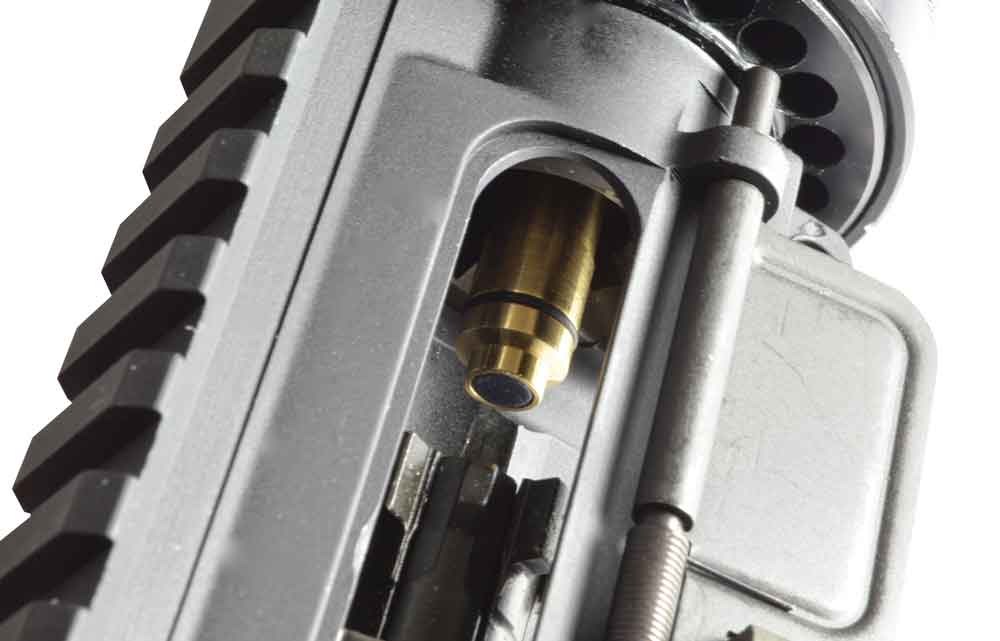
If you shoot at a reactive target, you’ll get instant feedback in the form of a sound, a light on the target at the point of impact, or both. That is, assuming you actually hit the target. A miss won’t register.
So Many Choices
LaserLyte and Laser Ammo, for example, have a variety of reactive targets that are designed to increase your draw and shot speed thanks to a timer, as well as some that are meant mostly as a fun way to improve your skills. They include everything from electronic cans that vibrate and spin when you make an accurate shot to targets that imitate the ding of a bullet striking a steel plate. Some even use changing colors to simulate a “shoot, don’t shoot” situation. Gallagher says Laser Ammo’s products are accurate to about 130 yards.
“They can be good training devices for snipers, too,” he adds.
Even better? Training simulators use everything from shooting games to real-life situations played through a gaming console or laptop. The scene can be projected on a wall or other large canvas for more life-like simulation. It also uses laser technology to register hits, even when you are shooting at targets projected on a wall.
“That’s a really good training device for personal defense situations,” says Gallagher.
What’s Best For You?
They all help you shoot live ammo better, and virtually any laser training device will help you develop a faster, more efficient draw and target acquisition. The best one for you depends on what you hope to accomplish.
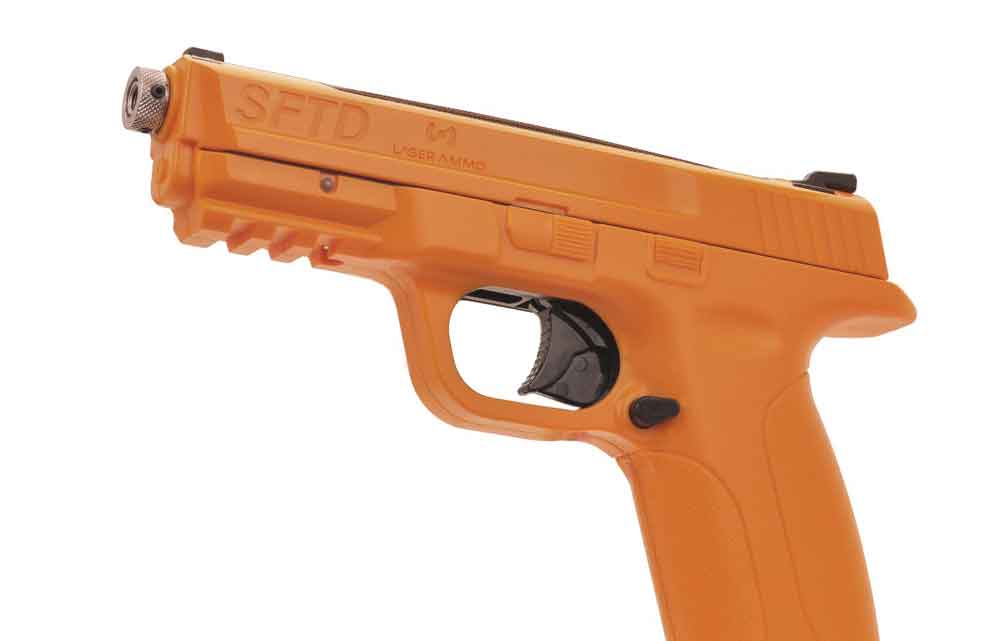
The simulated guns with built-in laser devices are great for rapid sighting and reflex development. You can practice multiple shots at the same or at different targets and at different distances. If nothing else, they are great fun.
The in-chamber, cartridge-shaped laser devices allow you to practice with your actual gun, eliminating weight, trigger pull and other variations between your gun and a practice model. Both LaserLyte and Laser Ammo, along with a number of other companies, sell in-chamber lasers in popular calibers, including .223 and .308. However, they work best with double-action guns so you can take as many “shots” as you like without working the slide and reloading the device. Gallagher says Laser Ammo also sells drop-in triggers that allow you to pull the trigger on single-action guns to avoid manually working the action after each shot.
Some companies, like LaserLyte and Next Level Training/SIRT, make training guns that aren’t actually working firearms, but they mimic the weight and feel of exact models. Next Level Training, for instance, offers guns that are similar to a Glock 17/22 and a Smith & Wesson M&P. Some trainers even have a working slide, a training magazine and adjustable triggers. The laser sight also has elevation and windage adjustments.
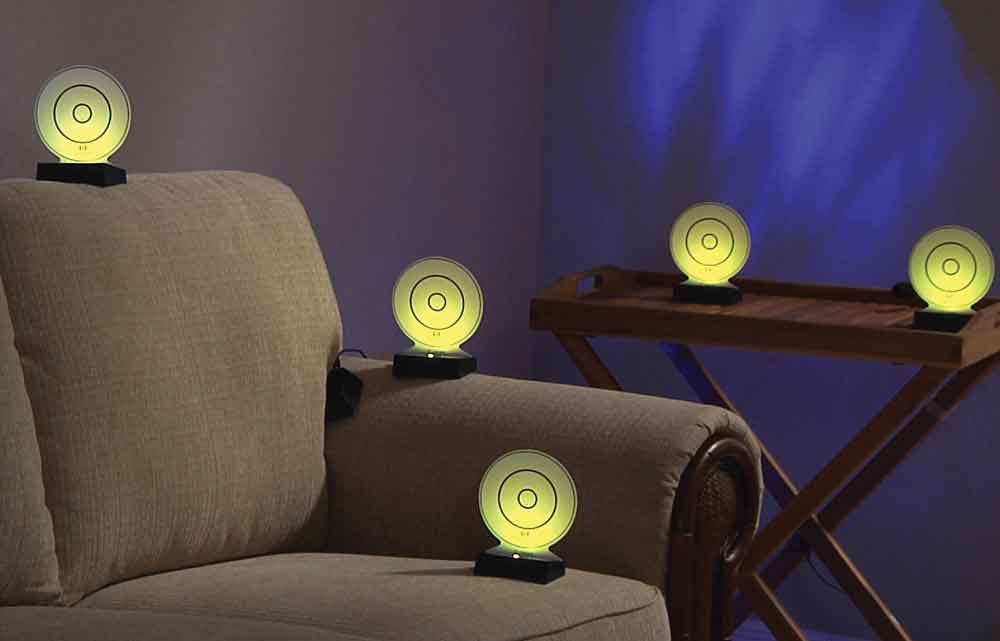
Laser Ammo also sells an infrared system that works much the same way as a laser-training device. The only difference is that you can’t see the beam emitted from the gun, but the reactive target can sense it.
“That’s a good tool because you are focused on the sights instead of the beam of light on the target,” says Gallagher.
No matter what training device you use, there’s no doubt you’ll be a better shooter when you use one regularly.
Editor's Notes: This article originally appeared in the Fall 2017 issue of Gun Digest the Magazine.

Next Step: Get your FREE Printable Target Pack
Enhance your shooting precision with our 62 MOA Targets, perfect for rifles and handguns. Crafted in collaboration with Storm Tactical for accuracy and versatility.
Subscribe to the Gun Digest email newsletter and get your downloadable target pack sent straight to your inbox. Stay updated with the latest firearms info in the industry.

![Best Concealed Carry Guns In 2025 [Field Tested] Wilson Combat EDC X9S 1](https://gundigest.com/wp-content/uploads/Wilson-Combat-EDC-X9S-1-324x160.jpg)


![Best 9mm Carbine: Affordable PCCs [Tested] Ruger Carbine Shooting](https://gundigest.com/wp-content/uploads/Ruger-Carbine-Shooting-100x70.jpg)
![Best AR-15: Top Options Available Today [Field Tested] Harrington and Richardson PSA XM177E2 feature](https://gundigest.com/wp-content/uploads/Harrington-and-Richardson-PSA-XM177E2-feature-100x70.jpg)

I’ve been looking at a few laser trainers and come across some videos about mantis too. Do you have any experience with that or know how it compares to the others?